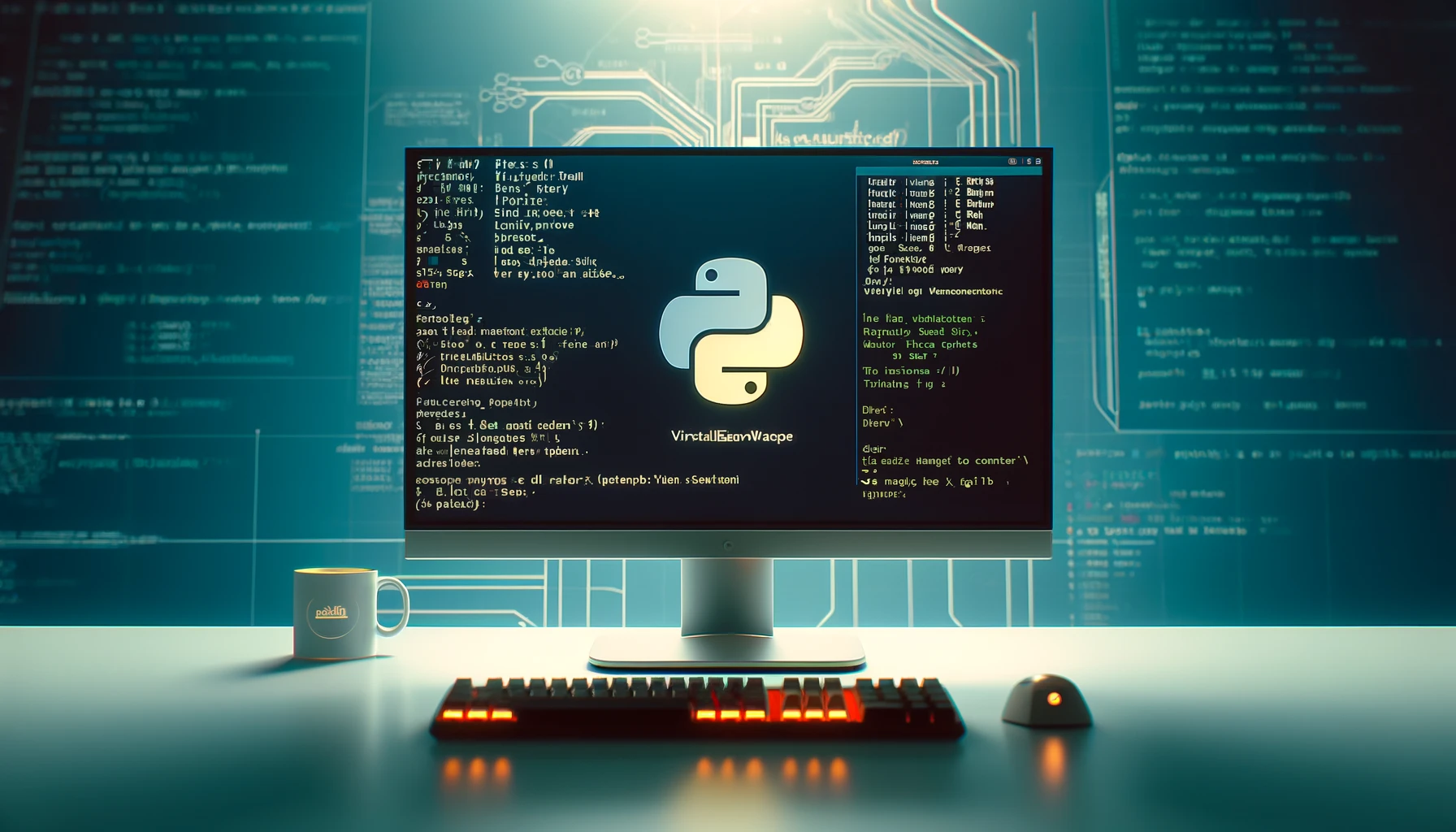Python3.12 Upgrade: Setting Up Virtualenvwrapper
 Ali Tavallaie
Ali Tavallaie
The Surprise Challenge
Recently, I decided to upgrade my system to Ubuntu 24.04. I enjoy keeping my setup current, and I wanted to take advantage of the latest features and improvements. Everything seemed to be going well until I hit a snag. I use virtualenvwrapper to manage my Python environments, but after the upgrade, it stopped working. I kept getting this error:
/usr/bin/python3: Error while finding module specification for 'virtualenvwrapper.hook_loader' (ModuleNotFoundError: No module named 'virtualenvwrapper')
virtualenvwrapper.sh: There was a problem running the initialization hooks.
If Python could not import the module virtualenvwrapper.hook_loader,
check that virtualenvwrapper has been installed for VIRTUALENVWRAPPER_PYTHON=/usr/bin/python3 and that PATH is set properly.
Digging into the Problem
This was a new problem for me. I discovered that Python 3.12, which comes with Ubuntu 24.04, has stricter rules about installing packages globally. This change is designed to prevent conflicts and maintain system stability by keeping the system's Python environment clean. However, it also means you can't just use pip to install things globally like before. Instead, you have to use virtual environments for package management.
I initially tried using pipx to install virtualenvwrapper, but I ran into another issue. The virtualenvwrapper installed via pipx wasn’t accessible in my .zshrc configuration. It seems pipx is great for some standalone applications, but it doesn't play well with tools like virtualenvwrapper that need to be sourced in a shell configuration file.
Finding the Solution
To fix this, I decided to install virtualenvwrapper in its own virtual environment. Here’s how I did it:
Step 1: Create a Virtual Environment
First, I created a new virtual environment to keep things isolated.
python3 -m venv ~/.virtualenvs/venv
This command made a new virtual environment in the ~/.virtualenvs/venv directory.
Step 2: Activate the Virtual Environment
Next, I activated the virtual environment.
source ~/.virtualenvs/venv/bin/activate
The shell prompt changed, showing I was now working inside the venv environment.
Step 3: Install virtualenvwrapper
With the virtual environment activated, I installed virtualenvwrapper.
pip install virtualenvwrapper
Why Do This in a Virtual Environment?
Avoid Conflicts: Python 3.12 doesn’t let you install packages globally to avoid messing up the system’s packages. Using a virtual environment keeps everything separate.
Isolation: By installing in a virtual environment,
virtualenvwrappergets its own set of dependencies, with no interference from other projects.Easy Management: If something breaks, you can just delete the virtual environment and start over, without affecting the system Python or other projects.
Step 4: Set Up My Shell
Next, I needed to tell my shell to use this new setup. I edited my .zshrc file (it could be .bashrc if you use bash).
Edit .zshrc
I opened my shell configuration file in a text editor:
nano ~/.zshrc
I added these lines:
export WORKON_HOME=$HOME/.virtualenvs
export VIRTUALENVWRAPPER_PYTHON=$HOME/.virtualenvs/venv/bin/python
export VIRTUALENVWRAPPER_VIRTUALENV=$HOME/.virtualenvs/venv/bin/virtualenv
source $HOME/.virtualenvs/venv/bin/virtualenvwrapper.sh
What Do These Lines Do?
export WORKON_HOME=$HOME/.virtualenvs: This sets the directory wherevirtualenvwrapperwill keep all my virtual environments.export VIRTUALENVWRAPPER_PYTHON=$HOME/.virtualenvs/venv/bin/python: This tellsvirtualenvwrapperto use the Python from my virtual environment.export VIRTUALENVWRAPPER_VIRTUALENV=$HOME/.virtualenvs/venv/bin/virtualenv: This points to thevirtualenvexecutable in my virtual environment.source $HOME/.virtualenvs/venv/bin/virtualenvwrapper.sh: This initializesvirtualenvwrapperso I can use its commands.
Save and Exit
In nano, I saved the file by pressing Ctrl+O and then Enter, and exited with Ctrl+X.
Step 5: Reload My Shell Configuration
To apply the changes, I reloaded my shell configuration:
source ~/.zshrc
Step 6: Check the Installation
Finally, I checked to see if everything was set up correctly:
which mkvirtualenv
This command showed the path to the mkvirtualenv script in my virtual environment, confirming that everything was working.
Wrapping It Up
Upgrading to Ubuntu 24.04 brought a little challenge with virtualenvwrapper, but I learned a lot by solving it. By using a dedicated virtual environment, I kept my system clean and my projects organized. If you run into the same issue, I hope this guide helps you out. Happy coding!
Subscribe to my newsletter
Read articles from Ali Tavallaie directly inside your inbox. Subscribe to the newsletter, and don't miss out.
Written by
